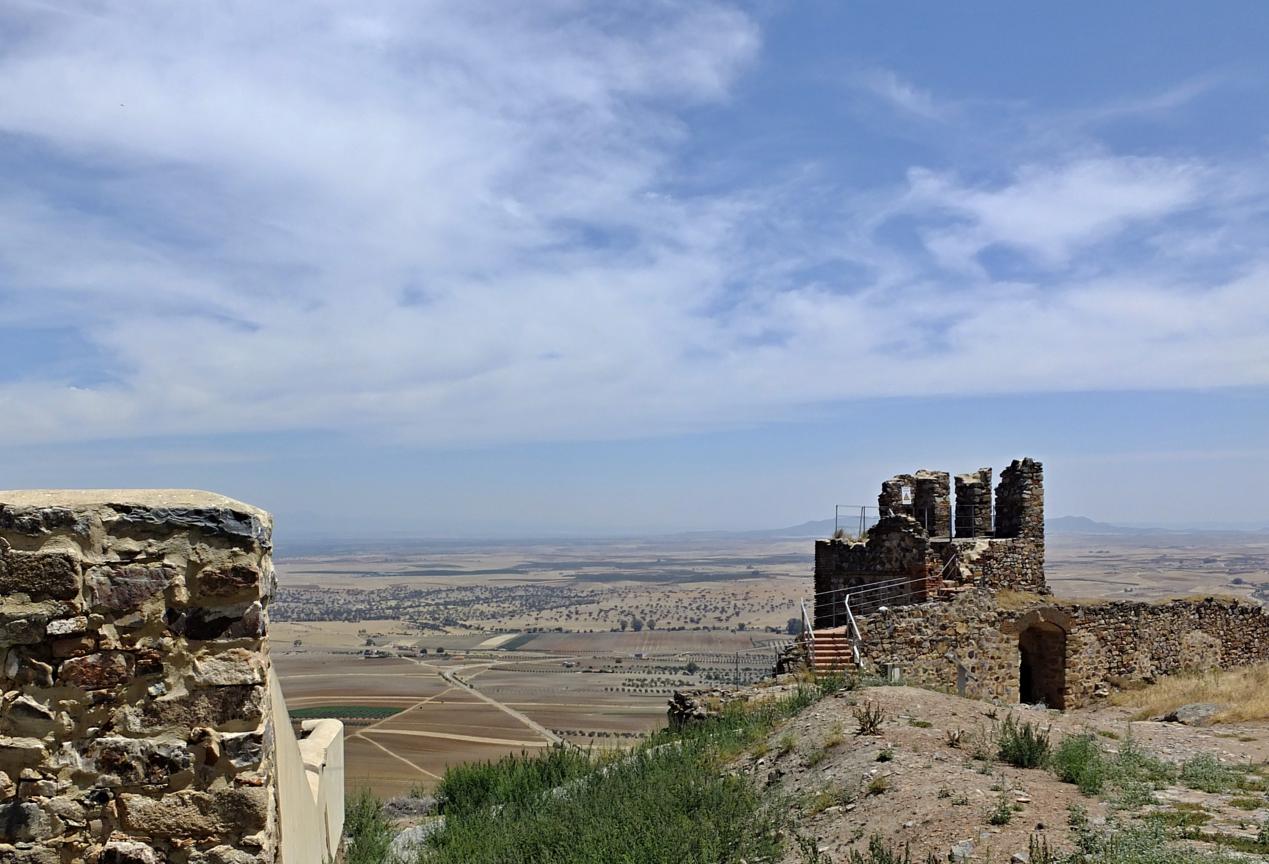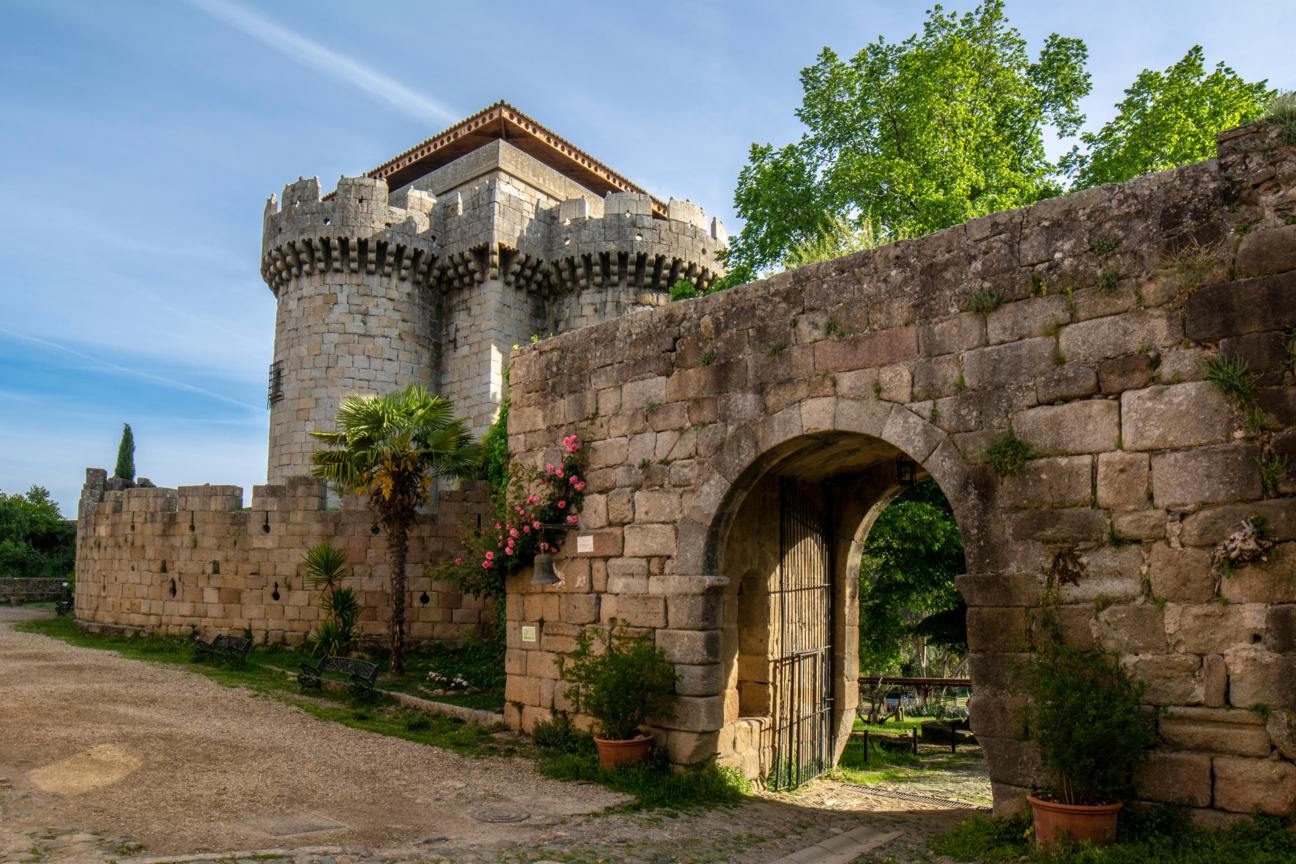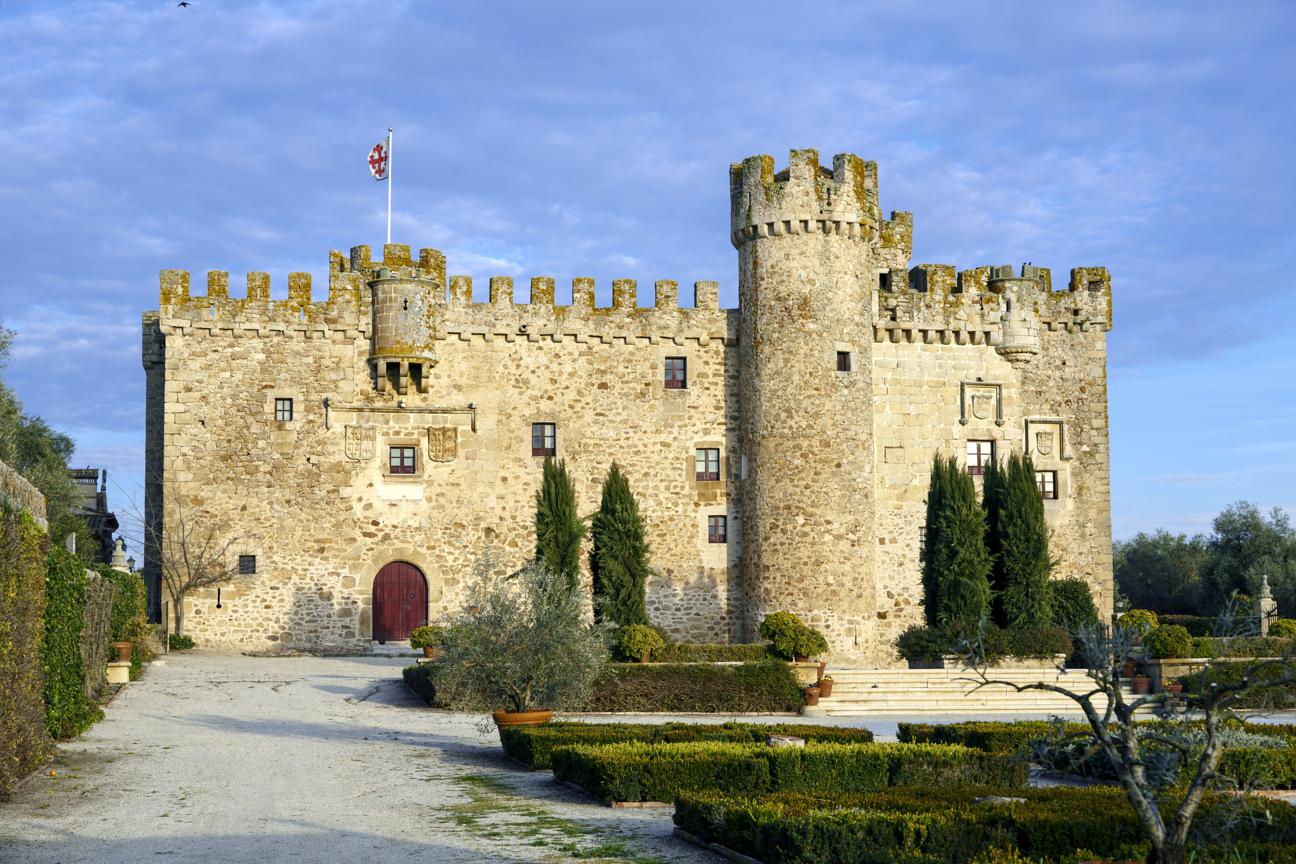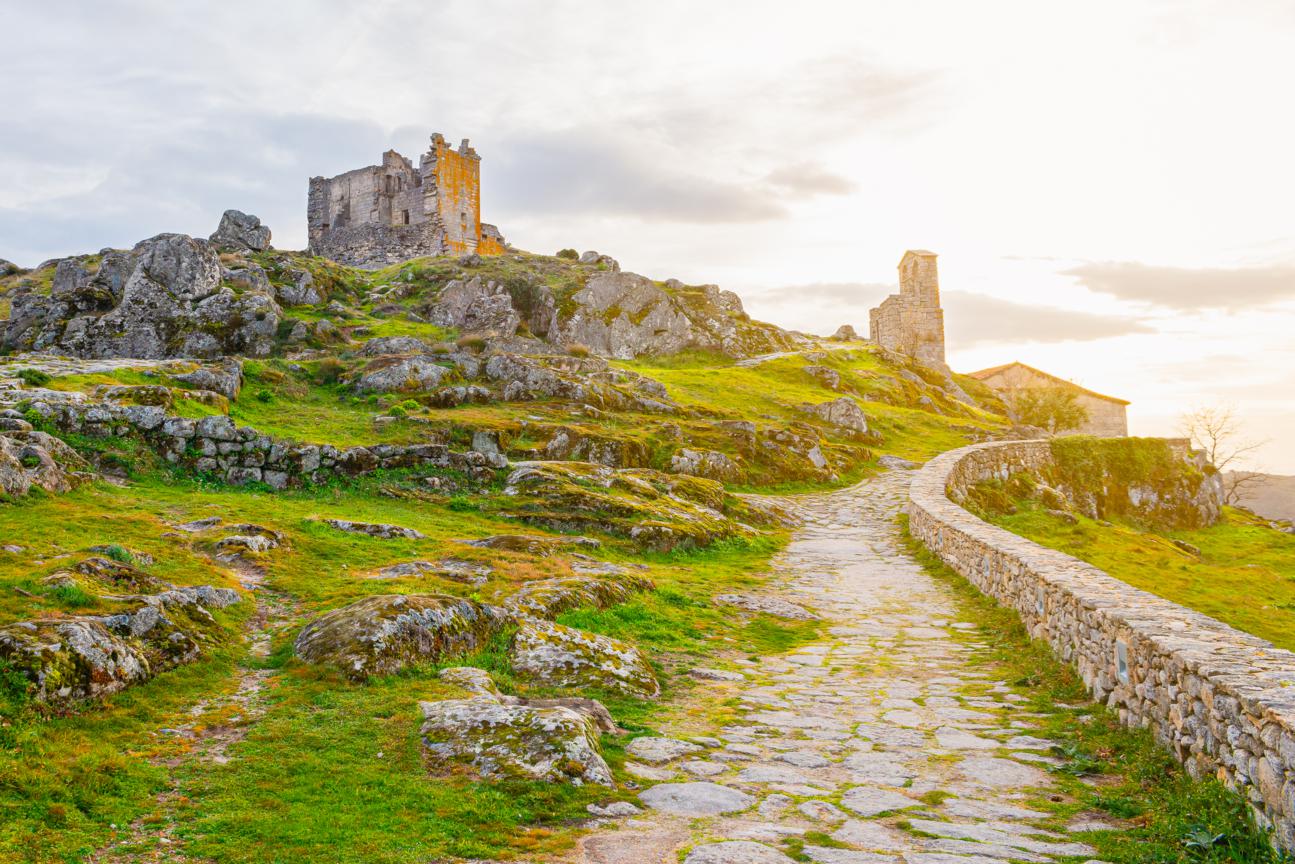Fortalezas de Extremadura / Extremadura fortresses

CASTILLO DE LUNA ALBURQUERQUE
El castillo de Luna, en Alburquerque, es una fortaleza medieval en perfecto estado de conservación que cuenta con cuatro recintos defensivos. Destaca la torre del homenaje y la villa adentro o barrio judío medieval. En su día dispuso de un puente levadizo para el acceso y como elemento defensivo. En caso de ataque del enemigo el puente se elevaba y desde la parte superior de la torre se arrojaba aceite hirviendo y proyectiles. Aunque construido durante la Edad Media, la fortaleza fue modificada por Álvaro de Luna, maestre de la Orden de Santiago y condestable de Castilla, que dotó a la torre del homenaje de cinco pisos abovedados.
LUNA ALBURQUERQUE CASTLE
The Luna Castle, in Albuquerque, is a medieval fortress in a perfect state of conservation which has four defensive enclosures. The keep and the heart of the town or medieval Jewish quarter are outstanding. When in operation, it had a drawbridge as the entrance which doubled as a defensive feature. In the event of an attack by the enemy, the drawbridge was raised and from the top of the tower, boiling oil and projectiles were launched. Despite being built in the Middle Ages, the fortress was modified by Álvaro de Luna, grand master of the Order of Santiago and the commander-in-chief of the army of Castile, who added five vaulted floors to the keep.

CASTILLO DE MAGACELA
La mayoría de los elementos defensivos del castillo de Magacela se construyeron durante la ocupación almohade. Tras la reconquista, cuando la fortaleza estaba en poder de los cristianos, seguía viviendo en la villa un gran número de musulmanes que dejaron su impronta en el castillo. Está levantado sobre una gran superficie rocosa y construido a base de ladrillo y mampostería en sus tres cuerpos o recintos, de los que el más importante es el de la parte occidental, que fue centro administrativo. En el interior del primer cuerpo se edificaron dos aljibes, la iglesia, el cementerio y varios espacios abovedados que se encuentran ruinas.
MAGACELA CASTLE
Most of the defensive elements of the Magacela Castle were built during the Almohade occupation. Following the reconquest, when the fort was under the control of the Christians, a great number of Muslims who left their mark on the castle continued to live in the village. It stands on a large rock surface and its three sections or walled enclosures are built from bricks and masonry work, of which the most important part is the western one, which was the administrative centre. Inside the first precinct were built two water cisterns, the church, and numerous vaulted areas which are in ruins.

CASTILLO DE GRANADILLA
Uno de los castillos más singulares de Extremadura es el de Granadilla, municipio abandonado por sus vecinos tras expropiarse sus tierras para la construcción del Embalse de Gabriel y Galán. Declarada conjunto histórico artístico, esta fortaleza se encuentra en buen estado de conservación y su torre se levanta junto a la muralla, de origen almohade. Se considera que el castillo fue construido por orden del primera Gran Duque de Alba, Fernando Álvarez de Toledo, durante el último cuarto del siglo XV. La estructura tiene formas simétricas y la construcción se realizó a base de sillería.
GRANADILLA CASTLE
One of the most outstanding castles in Extremadura is the Granadilla, a municipality abandoned by its inhabitants following the expropriations of their lands for the purpose of building the Gabriel y Galán Reservoir. Declared a historic-artistic complex, this fort is well-conserved and its tower stands next to the city wall, of Almohade origin. It is thought that the castle was built at the orders of the first Grand Duke of Alba, Fernando Álvarez de Toledo, during the last quarter of the fifteenth century. The structure is composed of symmetrical shapes and the building itself was constructed with ashlar work.

CASTILLO DE LA ARGUIJUELA DE ABAJO
Fortaleza del siglo XV en buen estado de conservación, su construcción la inició en el siglo XV Francisco de Obando “El Viejo”, aunque no concluyó hasta dos siglos después tras una serie de reformas que le dotaron de nuevos elementos. Inicialmente se concibió como fortaleza, aunque ha tenido diversos usos a lo largo de su historia. En una de sus reformas se construyó un patio interior y se levantaron torres, garitas, matacanes, troneras y saeteras al tiempo que se trabajó en la mejora y ampliación de las dependencias residenciales. El castillo está declarado Bien de Interés Cultural.
LA ARGUIJUELA DE ABAJO CASTLE
A well-preserved, fifteenth-century fortress whose construction was commenced in the fifteenth century by Francisco de Obando, 'El Viejo', although it wasn't completed until two centuries later following a series of renovations which gave it new features. It was initially conceived as a fort, nonetheless, it has served various purposes throughout its history. During one of the renovations, an inner court was built and towers, sentry boxes, machicolations, small windows, arrow slits were built at the same time as work was done to improve and extend residential dwellings. The castle has been declared a 'Bien de Interés Cultural' – an asset of cultural interest.

CASTILLO DE TREVEJO
Ubicado en la Sierra de Gata, el castillo de Trevejo se levantó sobre una antigua edificación de origen musulmán en el siglo XII y pasó por distintas manos como las Órdenes del Temple, de Santiago y de Alcántara hasta que finalmente fue destruido durante la invasión francesa. La torre del homenaje y una parte de la muralla han logrado sobrevivir a los avatares históricos de esta fortaleza, que fue donada en 1184 por Fernando II a los hospitalarios, que lo tuvieron en propiedad hasta el siglo XVIII. En el exterior del castillo se localizan varias tumbas antropomórficas de piedra.
TREVEJO CASTLE
Situated in the Sierra de Gata, the Trevejo Castle was erected on the site of an old building of Muslim origin dating back to the twelfth century and it was home to various occupants such as the Orders of the Temple, of Santiago and Alcántara until it was eventually destroyed during the French invasion. The keep and a section of the ramparts have survived the historic ups and downs the castle has been through, it was given to the Hospitallers by King Fernando II in 1184, who were the owners until the eighteenth century. Outside the castle can be found a number of anthropomorphic stone tombs.







